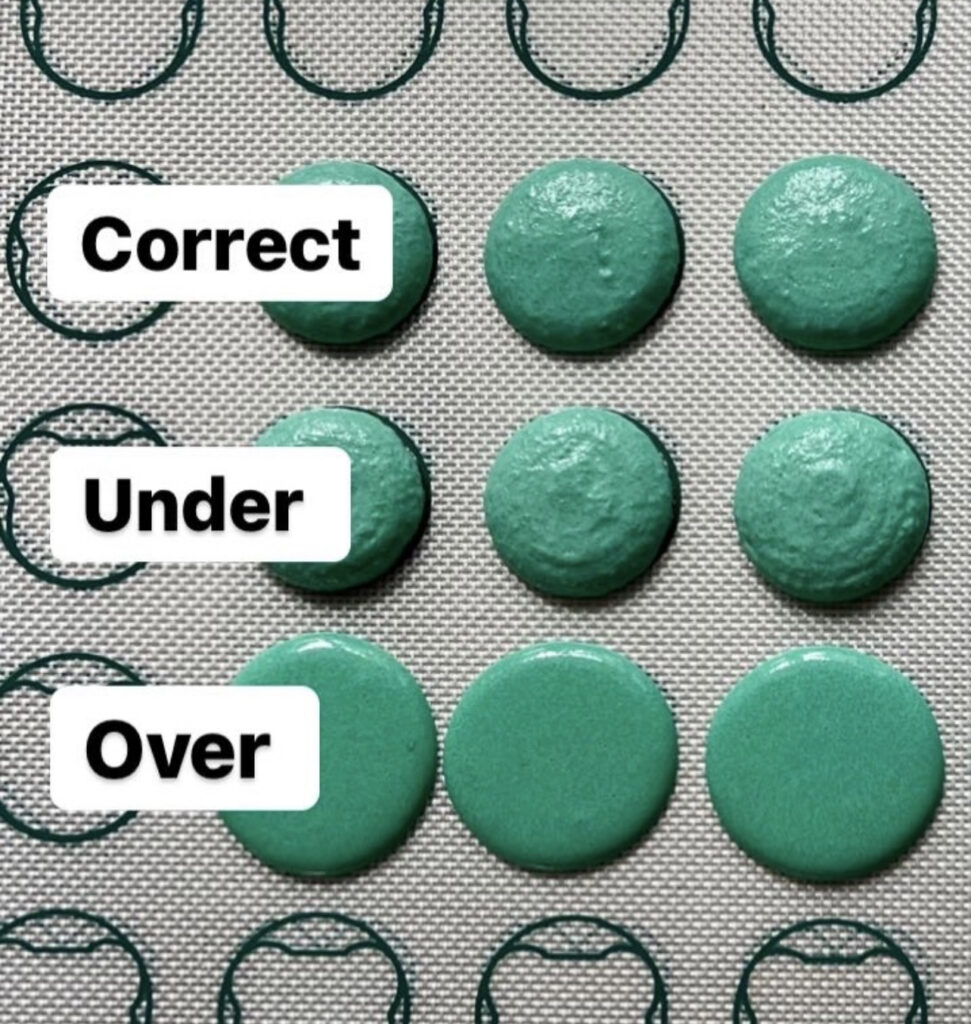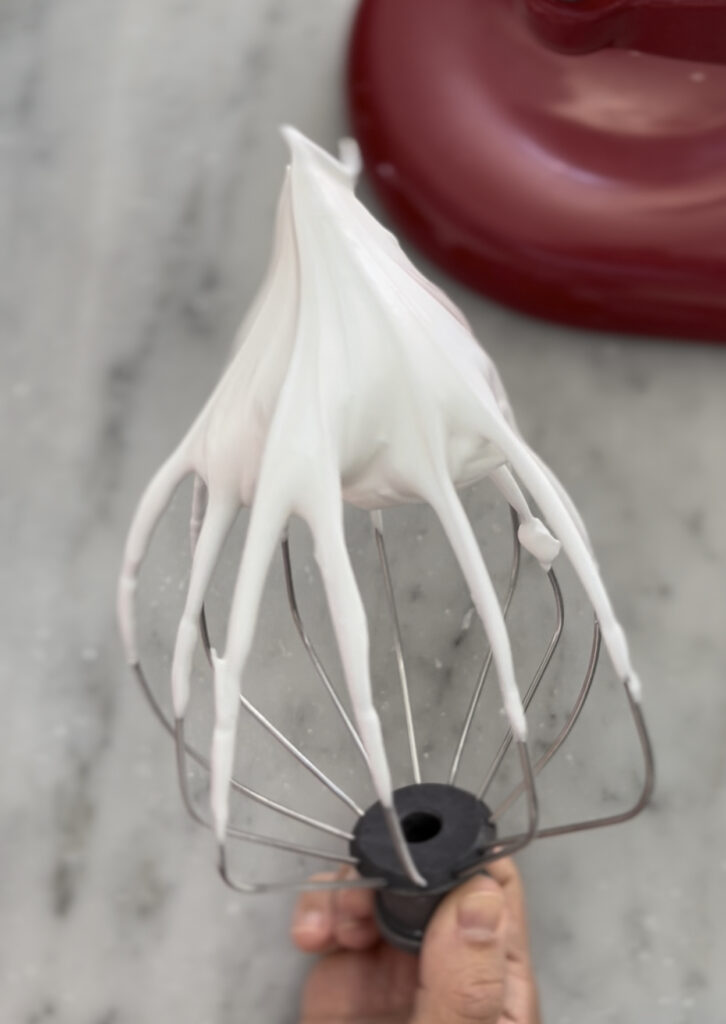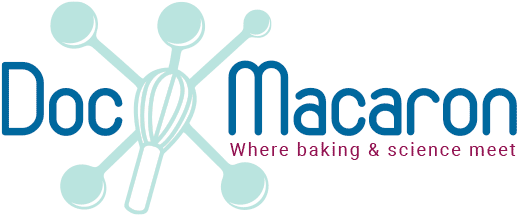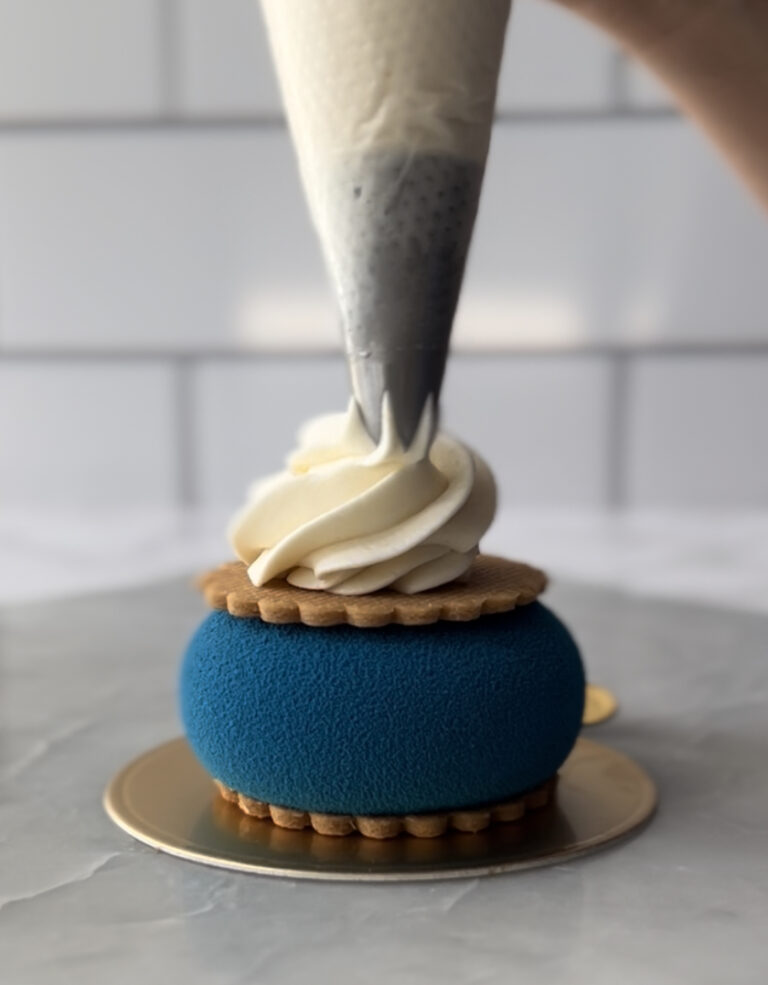The Science Behind Macarons
Macarons are fascinating cookies; they are made with four simple ingredients, yet they can be difficult to bake. Let me teach you the science behind macarons, so you can master them with success.
I have spent countless hours experimenting and trying to understand the science of how ingredients, equipment, the environment, etc., all contribute to making a successful or unsuccessful macaron.

There is a lot of science behind baking macarons. Having a base understanding of it can greatly help you on your macaron journey. But before we get into the science of macarons let’s cover some basics about macarons

Table of Contents
What is a Macaron?
A macaron is a meringue-based confection. A macaron typically contains two cookies sandwiched with a filling of choice. They are categorized as “petit fours”, a French term that describes a small, two-bites dessert.
Macarons are thought to have originated in Italy and brought to France by Catherine di Medici in the XVI century. However, the current form of macarons took place in Paris during the XX century.
Macarons are available in a wide range of flavors and fillings. They can be constantly innovated and customized to reflect flavors of regions, season changes, and many themes.
Macarons have received a lot of recent attention given trends in the food industry. Particularly, their small size makes them only about 70-100 calories per cookie, making them an attractive dessert choice to many. Also, all macaron shells are gluten-free, and macarons can also be made vegan.

What are macarons made of?
Macarons are made of four humble ingredients: egg whites, granulated sugar, almond flour, and powdered (or icing) sugar. Flavoring and colorants can be added to the cookies to enhance both their taste and visual appeal.
Both the egg whites and the granulated sugar are used to make a fluffy meringue, that is then folded to the mixture of almond flour and powdered sugar.
This process does not sound complicated at all, and when I first read about it, I was very surprised about how simple it seemed. However, once I started making macarons, I realized of how tricky it can be.
What are the different methods to make macarons?
The method used for baking macarons is based on the type of meringue utilized. There are three types of meringues that you may see in many recipes: French, Swiss or Italian.
Science Behind Macarons:
Now we can get into the science behind macarons. The science behind macarons revolves primarily around controlling the amount of air. Regulating the temperature is also an important component as for any pastry, particularly during baking.
To understand everything about why air is important for macarons let’s start talking about meringue.
Science of Meringue
A meringue is an airy and fluffy preparation made of whipped egg whites and sugar.
Egg whites contain 90% water and 10% proteins (such as albumin). These proteins provide the structural support to trap air.
The process of whisking the egg whites promotes unfolding of the proteins, leading to the formation of a mesh to which air is added. The sugar facilitates and stabilizes the trapping of air into the egg white proteins.
The addition of sugar (and therefore air) during whisking will result in the formation of a peak. A “stiff” peak (shown in the photo) is ideal for macarons.

What is the difference between the types of meringues?
The difference among the types of meringue is the way that sugar is incorporated to the whipping egg whites.
- In the French meringue the granulated sugar is added directly to frothy/foamy egg whites.
- In the Swiss meringue, both the sugar and the egg whites are heated in a double boiler until the sugar is dissolved.
- The sugar in the Italian meringue is cooked with water until 118-120 Celsius / 240 Fahrenheit to make a syrup that is then added to the foamy egg whites.
Among the three meringues, the French one is the least stable and tends to deflate (lose air), while both Swiss and Italian are more stable and will retain the air for longer time.
How can you make a more stable meringue?
The addition of ingredients like cream of tartar and egg white powder will help make a more stable meringue that will help your macarons.
Scientifically, the cream of tartar is an acid that facilitates the unfolding of proteins in the egg whites. The egg white powder will provide more proteins to trap more air and make a fluffier and stronger meringue.
Another factor that affects the stability of the meringue is the amount of sugar used, particularly for French meringue. A ratio closer to 1:1 (equal amount of egg whites and sugar) leads to a much stronger French meringue compared to lower ratios.
I use a ratio of 1:0.9 (egg white: sugar) in my French meringue, but there are many recipes out there that use a wide range of ratios. I advise you to try a couple of these to find which one works better for you!
What is Macaronage?
Macaronage is the process of folding the macaron batter, which was made by combining the meringue with the mixture of almond flour and powdered sugar.
Paradoxically, this process is intended to remove air from the batter, which is done until the batter has the right amount of air that gives the texture that is ideal for macarons. This texture is reflected by a glossy batter that continuously flows off the spatula like a ribbon.

The importance of the environment and temperature:
The environmental conditions will affect how you make your macarons. Some people say that they would not bake macarons during a rainy day because of the moisture.
This has never stopped me from baking my favorite cookie! The humidity will affect the time you need to rest your macarons to form a skin, this is particularly important because they could crack in the oven while baking.
The baking temperature is another important factor, macarons tend to bake at around 275-325 Fahrenheit, a temperature range that is below most baked goods. If the oven is too hot, the air in the batter will be released too quickly as a steam and may cause the top of the macaron to crack. Therefore, a careful control of the temperature in the oven, to regulate the air (once again), is very important.

Some useful tips:
Here are some of the tips I advise to follow once you bake macarons. Sign up to my email list to get details about each of them:
- Always avoid any fat and oils.
- Avoid adding water to the meringue or batter
- Understand the desirable baking parameters in your oven
- Be patient.
Related Recipes







hi , I cont understand my oven temperature i baked my macaron in 150C the feet go out and if I bake it in 140C no feet ,
I preheat my oven for 30min and I use thermometer when I open my oven to put the macaron as fast as I can the temperature go down directly 😅 I don’t know what to do. ☹️
I love this scientific article..
I make my macarons with the swiss method, equal parts egg white and sugar. Today I received a box of Macarons from Paris, and they were almost sugar-free compared to mine. I google-translated about 20 “recette de macarons”, and found a wide range on sugar, between 0g-to double the egg white. I will try to lower the sugar ratio to the egg whites, and se how low I can go!
I also noticed that when I had a batch of macaron left in the piping bag (didn’t have enough oven trays) for almost 2 hour, the macarons came out perfect! Really perfect. My best macarons lately, has been those that didn’t fit on the first trays.
Thank you for breaking up the chemistry like this. Awesome reading.
Best regards Kicki Szabo
Ig: Misskingrider
Hello,
When I make Swiss meringue macarons, they seem to be little hard and yet underbaked from inside. The shell is also not very full. I bake for 18 minutes at 300 F. Please advise.